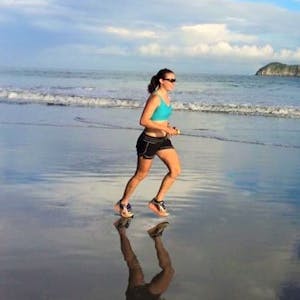What do you find the best way to avoid shin splints?
By: Krissy Flythe
Got a question for the coaches? Send it to newsletter@uppervalleyrunningclub.org and I'll send it on!
What do you find the best way to avoid shin splints?
— Krissy Flythe
Greg Hagley
I'll be brief. Shin splints are usually related to two things, running form and training progression.
Running form. Most often (not always) shin splints are related to a running form with a heavy heel strike or excessive forefoot strike.
Training progression. Most often (not always) shin splints are related to increasing running mileage too quickly. It may also be related to changing running surfaces or transitioning to different running shoes too quickly.
Let me know if you'd like me to elaborate.
Greg Hagley
Greg Hagley is a physical therapist at Dartmouth-Hitchcock in Lebanon and a certified USA Triathlon Level I coach.
Carly Wynn
My thoughts on this seem to fall into two categories: strictly DIY and strictly "needs the help of a professional." I hope readers will be able to make use of the DIY ones, and take away some useful questions to ask the Docs, if they opt to seek professional assistance.
Pre-running considerations:
1) Shoes that are in good condition, and match the shape and flex of your foot and ankle. Consult a PT or podiatrist if you're unsure, and trust your own body and how it responds to various shoes. You don't necessarily need a shoe or insole designed for feet like yours, though they may be a good place to start if you've been having trouble with other shoes. Replace old and worn shoes.
2) Your plan: just getting started with running? Amping up your mileage for a long race? Take mileage increases slowly and with caution, as you would to avoid any overuse injury. Check in with a coach if you're unsure.
3) Conditions. Softer surfaces are a nice relief from the pounding of road running; consider incorporating them.
Body considerations:
1) Are you actively strengthening and mobilizing your feet, ankles, and calves? Be sure to incorporate exercises for the fascia in the feet (towel toe curls, short foot drill, etc.), dorsiflexion exercises, calf & hamstring stretches, calf raises, toe & heel walks, and posture exercises. I recommend regular strength training and injury-prevention, "prehab," to all my athletes. Again, check in with a coach or PT if you're not sure what to do, or are having trouble incorporating prehab regularly into your routine.
2) Have you gained weight recently? Regardless of the cause, and even if your overall health is better at a higher weight, remember that your body will take time to adjust to the higher impact, as it would if you started running with a full backpack. It will adjust, but again, take it slowly and gently.
3) Your stride: do you use your major muscle groups (especially glutes?) Do you distribute weight through the foot (as opposed to heel striking/toe-running?) Sometimes, these things are hard to assess without the help of a professional and a videotape, and it is always possible that trying to correct a stride that is long set-in can lead to more problems. But I would be remiss to not include that the way you run affects how pressure is distributed.

Carly Wynn
Carly Wynn is a personal coach at www.CarlyOutside.com, and can be reached at Carly@CarlyOutside.com





